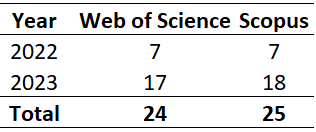Civil and Sustainable Urban Engineering (CSUE)
Open Access (OA) JournalCivil and Sustainable Urban Engineering (e-ISSN: 2808-9200) is an international, scientific, peer-reviewed, open-access journal on all aspects of basic and applied research involving three important divisions of Civil Engineering, Construction Management, and Urban Engineering published biannually online (June and December) by Tecno Scientifica and supported by Society of Tropical Science and Technology. Open Access — free for readers. High Visibility: indexed within CrossRef, Scilit, Google Scholar and many other databases. Rapid publication: manuscripts are peer-reviewed and a first decision is provided to authors approximately 3 weeks after submission. About CSUE journal | All volumes & issues












